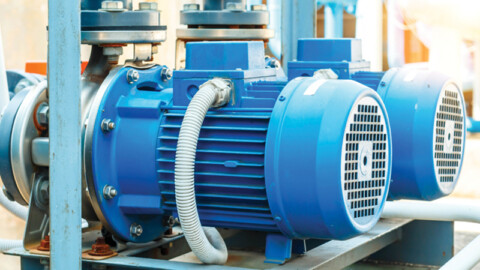by Ross Mackay, Pump Reliability Consultant, Ross Mackay Associates
Pump reliability expert Ross Mackay shares his thoughts on pump failure, which come back to two simple ideas: most pump problems have very practical solutions; and repetitive failure can be stopped.
Over the last 25 years of a much longer career in pumps, I’ve been given the privilege of training tens of thousands of engineers and technicians in pump reliability. This has provided me with the opportunity to hear the problems of that same number of pump users in the same period of time.
From this experience I’ve learned three things:
- Most pump problems are very practical
- The solutions are also very practical
- Repetitive pump failure can be stopped.
To most of you, the first of these comes as no surprise, because you’ve been living with some very practical issues yourself, such as: my pump isn’t delivering enough water; it doesn’t matter what seal I use, it fails every three months; we can’t seem to stop the cavitation; and so on and so on.
It’s the second two that may offer some surprise. Particularly if you are in the kind of plant where repetitive pump failure is causing ongoing problems like lost production, expensive downtime, environmental difficulties, and excessive maintenance costs; but it really is true. Most pump problems have very practical solutions and repetitive failure can be stopped.
So why do so many companies live with a pattern of repetitive pump failure? Well, in my experience, it usually means one of four things:
- They don’t know how to prevent their pump problems
- They’re not willing to do what’s necessary to prevent the pump problems
- They don’t think it’s possible to prevent their pump problems
- They don’t want to prevent their pump problems.
We won’t waste any time on the last group, other than to say that it does exist. A millwright in one particular plant told me quite openly that pump failure was sending his kids through college by means of the overtime it gave him. Consequently, he wouldn’t be trying too hard to prevent it!
As for our other categories of people living with repetitive pump failure:
- The first group don’t believe it’s possible to prevent the pump problems because, if it were true, somebody would have done it before now. A sad but not uncommon attitude.
- The second are not willing (or able) to commit the resources to make the necessary changes to eliminate the problem. Occasionally this can be a real budget problem, but all too often it’s a result of short-term thinking.
- Finally, for the third group, not knowing how to prevent pump failure is simply a matter of not having the necessary information. There’s no shame in that; the only shame lies in staying that way.
The reality is that, in many plants, not having the information is normal, because nobody gave it to you. That’s why so many people think that their problems are inevitable and can’t be prevented. That is not true!
The problem is frequently ‘on the job’ training. Or, if we can be more honest with each other, ‘picking it up as you go along’. What little training that does exist is usually limited, frequently inaccurate, or is provided by the pump manufacturers who generally focus on how to take the pumps apart and put them together again. This is usually referred to as ‘hands-on’ training, yet most millwrights can do this extremely well, simply because they’ve had to do it so frequently!
Hands-on training is very popular because everyone (including the maintenance department) just knows that the pump failed again because maintenance did something wrong the last time they fixed it. Or did they?
If that is the case, consider these five important questions:
- Which two pump parts are the most technologically advanced?
- Which two pump parts are not covered by a warranty?
- Which two pump parts are not manufactured by the pump company?
- Which two pump parts are the ones that fail most frequently?
- Why?
While anyone who knows their way around a pump can answer the first four questions, it’s the last one that causes some hesitation, and no wonder. The seals and bearings in most pumps act in a manner similar to the fuse in an electrical system. To a lesser degree, exactly the same thing will happen with packing. Just because the fuse fails, doesn’t mean there is anything wrong with the fuse. In fact, most of us understand that the problem is almost always somewhere else. However, when a seal, packing, or a bearing fails, instead of looking somewhere else for the problem, we simply replace the offending part, reassemble the pump, and start up again.
In other words, we reinstall the same problem, and can expect to deal with it again, and again, and again, throughout the life of the pump.
So how do we break the cycle of failure?
Well, one thing we shouldn’t do is keep doing what we’ve been doing up until now. It’s been said that the most prominent example of insanity is to keep doing what you’ve always done, but to expect different results. That doesn’t work in the pump business any more than it does anywhere else in life.
Nor do we try about four or five different things at the same time, because if any of them do work, we still don’t know which one was effective; preventing our ability to repeat the success elsewhere.
Simply put, we can try and figure out where the real problem is and fix it. This is frequently referred to with the grandiose title of Root Cause Analysis, but let’s not get too fancy with either the words we use or the things we try.
The reality is (and I probably shouldn’t admit this publicly as it could affect my consulting business) that this pump business is not really as complicated as many would have you believe. The only really difficult area is in designing the pump in the first place. Once you have it in your plant or mill, all you have to do is operate and maintain it within certain preset parameters and there’s no problem. If I’m ever accused of being too simplistic, I will happily plead guilty, because for every pump problem you will ever experience, I believe there are only six possible solutions. So, repetitive pump failure really is the unnecessary evil in almost every process.
Ross Mackay is internationally recognised as a specialist
in pump reliability, specialising in helping companies increase
their pump reliability and reduce operating and maintenance costs.
He is the author of the industry best-selling textbook The Practical Pumping Handbook and can be reached at +1 905 726 9587 or through his web site at www.practicalpumping.com.

















